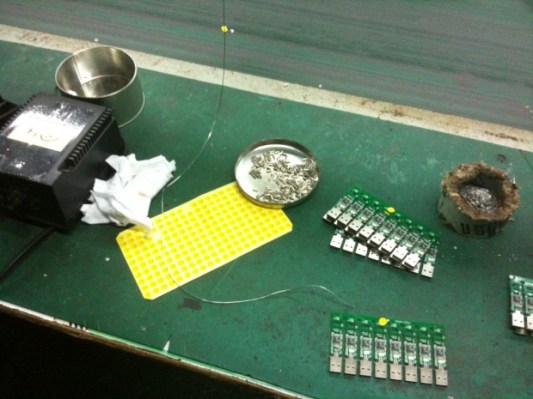In the hullabaloo over Mike Daisey lying about meeting injured workers, the spotlight turned from actual employment problems in Asia onto the face of the orotund and penitent former colonialist. Now that the news cycle has passed, we’re no longer interested in the topic of Chinese manufacturing and, judging by the positive response to my April Fools’ post on Sunday, the world now understands assembly work to be a good if tedious form of employment.
But the problems Daisey seemed to fabricate do exist. He just didn’t do the legwork to see them. I’ve personally been to factories where OSHA is just a four-letter word and ISO standards are paid little more than lip service. And the factories I saw were relatively good and considered reputable suppliers by Westerners in town. After seeing these I wondered “If these are the good ones, what are the bad ones like?”
We’re slowly finding out, with or without Daisey’s histrionics.
Arguably the process of making anything isn’t very glamorous, but compared to what could be in China, other parts of Asia and, in fact the rest of the developed and undeveloped world, Foxconn is a relative paradise. Workers are given room and board, a stipend to live off-campus if they want, and workers often want more work, not less. Foxconn is on par with any manufacturing center anywhere else in the world, including the U.S. The only difference, obviously, is the pittance workers are paid.
Then there’s everything else. Consider this excellent series on China’s Bloody Factories where much of the junk we consume is made and a number of the workers are injured and poisoned. Many of these factories are in the same district as Foxconn’s factories and, as Adam Matthews notes, many of these factories are shanzai – literally “bandit or warlord village” workshops – and unregistered. There is little expectation in terms of safety and comfort at these factories.
So there’s your smoking gun. There’s your crab-clawed worker tapping at the iPad. A woman who was poisoned because her employers ignored or didn’t understand the dangers of various chemicals. It happens, it will continue to happen, but it won’t happen under the bright spotlight of world attention that is being shone on Foxconn specifically.
It is worse on the margins, where capitalistic urges encourage playing fast and loose with human life. I remember my grandmother telling me a story about how she used to work at the glove factory near Wheeling, West Virginia. The ladies there sewed glove after glove, hour after hour, making a pittance. It was summer and the bosses, prepping for fall, wanted as many gloves as they could get. And so they made the women work in sweltering conditions. They gave out salt pills to help avoid heat exhaustion, but the women fainted anyway, succumbing to the season.
That’s all over now. That sort of manufacturing is gone, wiped out by legislation, unions, and common sense. Sadly, China is far from the time when workers can unite and fight back. That time is coming, and Daisey probably did more to hinder its coming than any other activist, here or abroad.
